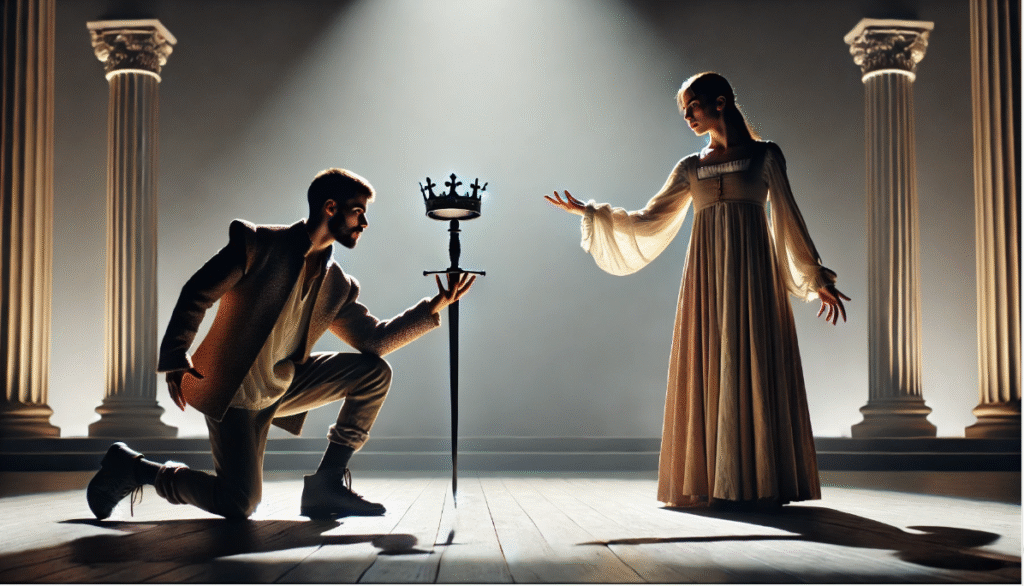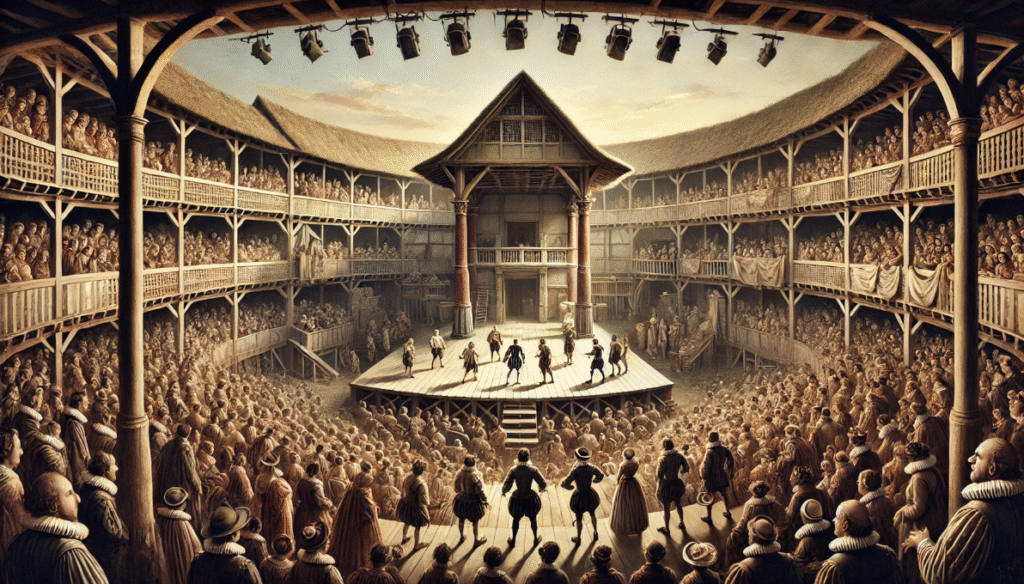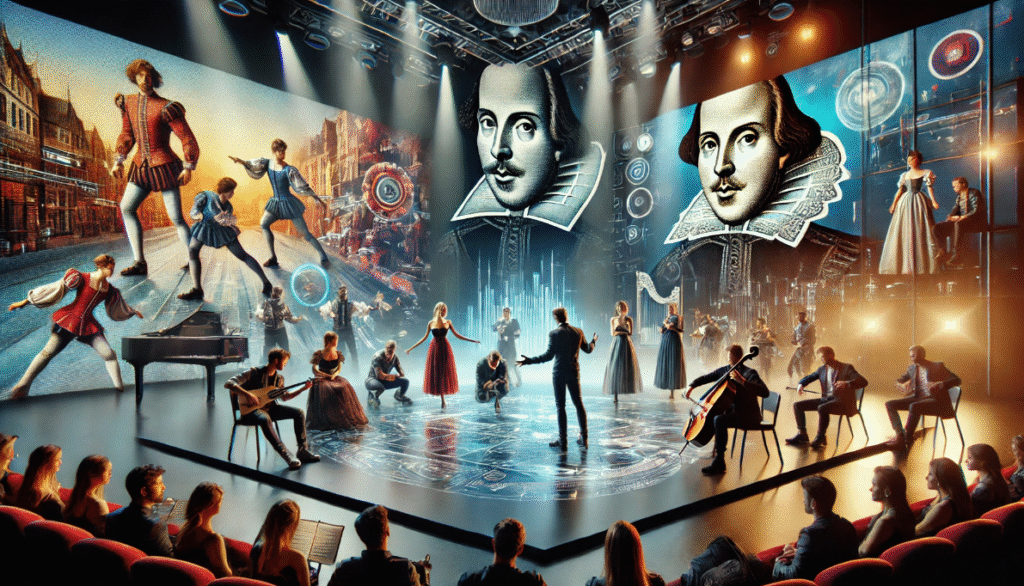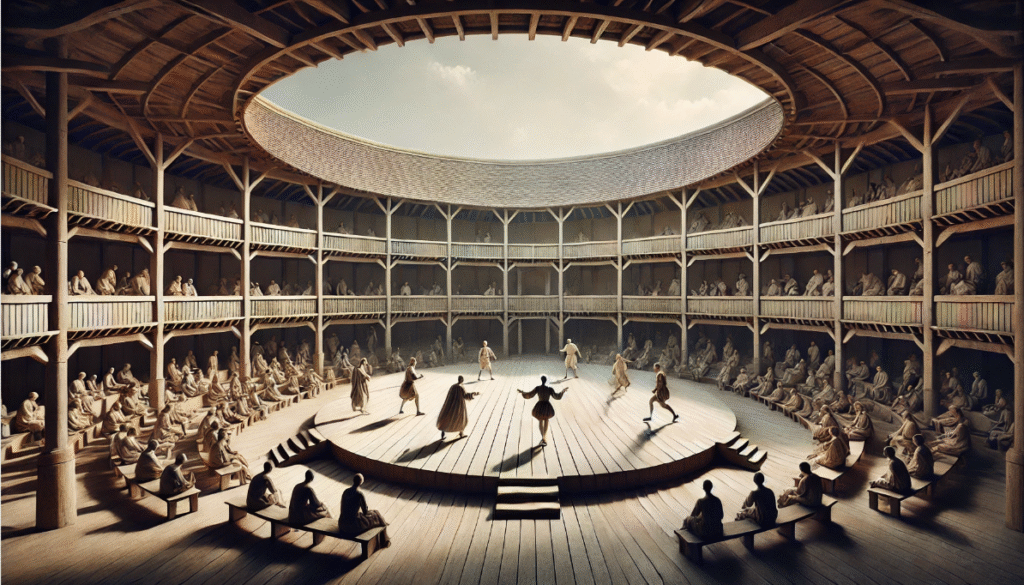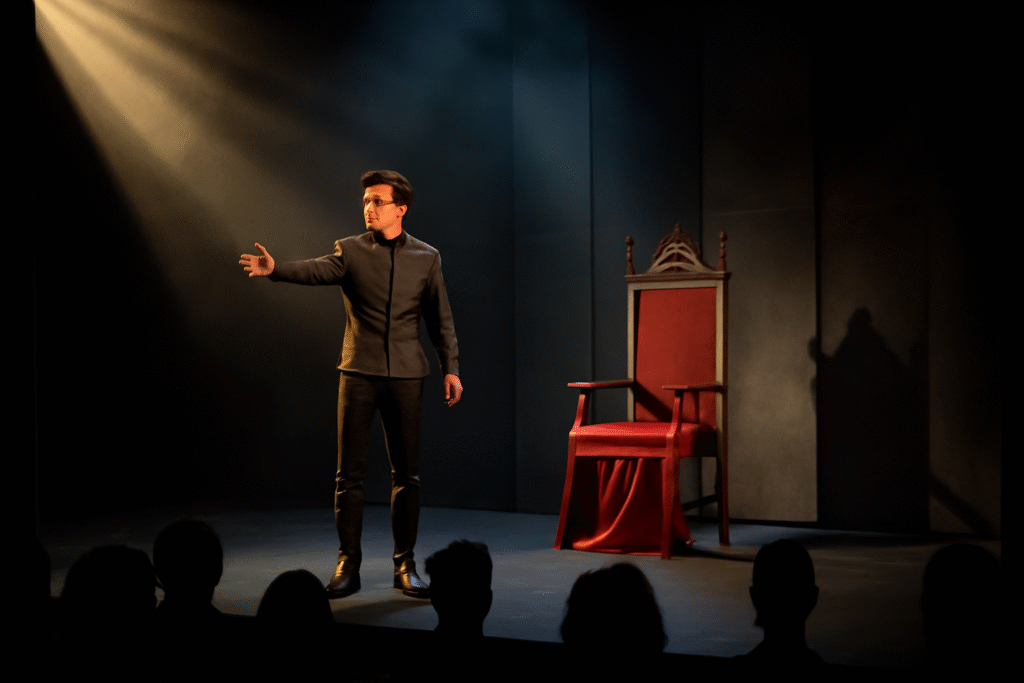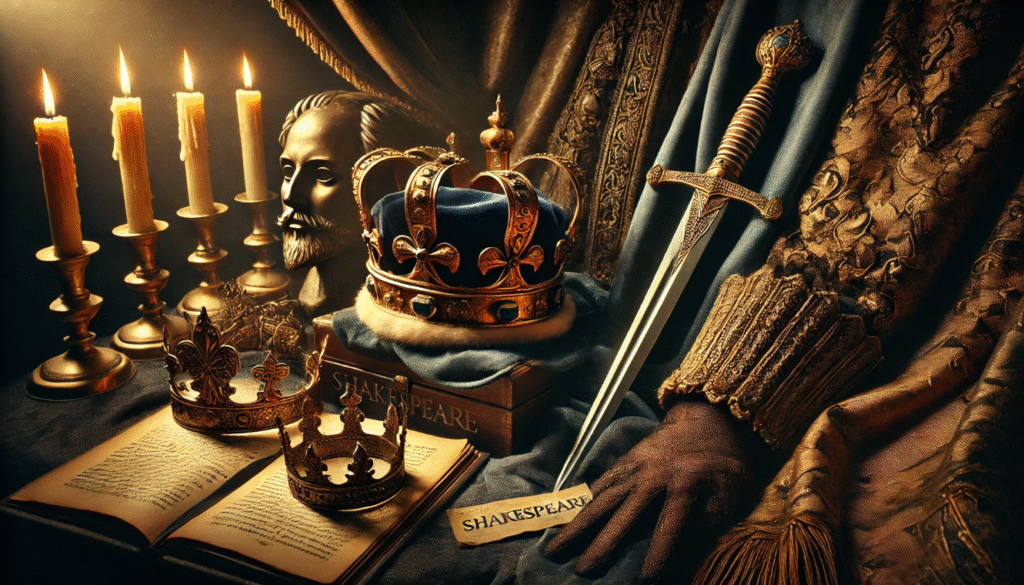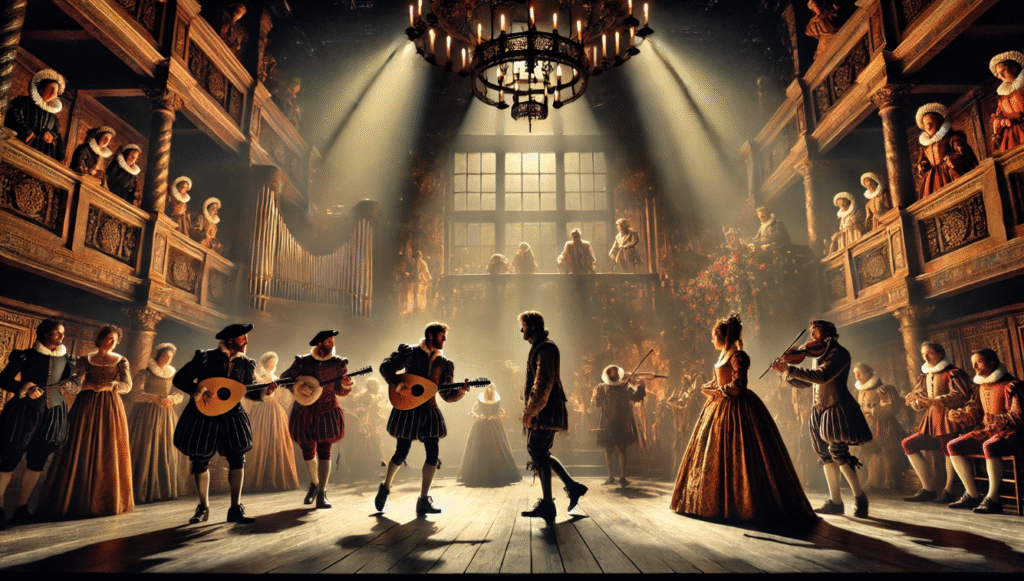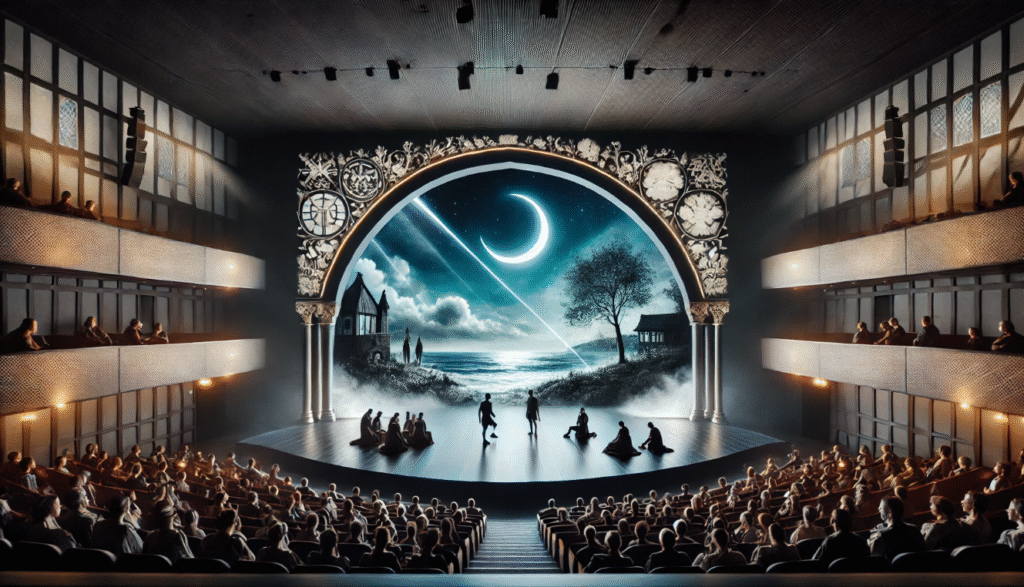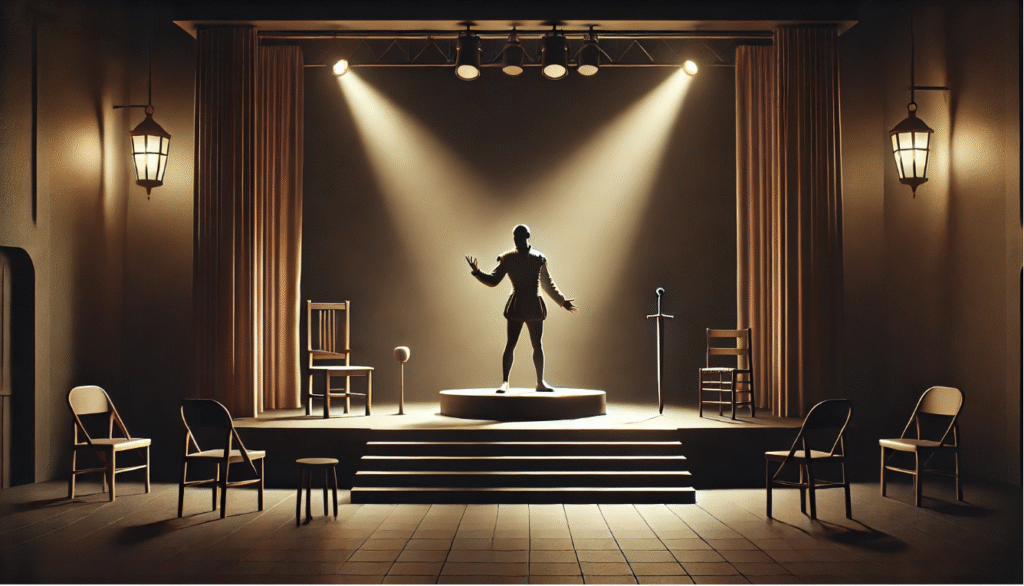Picture a theater where actors recite lines on a bare stage, with no depth to their characters, no emotional connection, and no immersive storytelling. This was the reality of performance before William Shakespeare transformed it with his innovations in theatrical techniques. His revolutionary approaches to soliloquies, language, character development, and stagecraft reshaped the art of theater, creating a blueprint for modern stagecraft that resonates in today’s performances. Whether you’re a theater enthusiast, a student, or a professional, understanding Shakespeare’s contributions offers invaluable insights into crafting compelling performances. In this article, we’ll explore how Shakespeare’s pioneering methods—born in the Elizabethan era—continue to influence directors, actors, and designers, providing practical lessons for today’s stage.
The Elizabethan Theater Context: Setting the Stage for Innovation
The Limitations of Pre-Shakespearean Theater
Before Shakespeare, theater was a far cry from the dynamic art form we know today. Medieval morality plays and early Renaissance dramas often relied on simplistic narratives, with characters serving as archetypes rather than individuals with depth. Stages were rudimentary, often just temporary platforms in marketplaces or innyards, limiting opportunities for creative staging. Audiences, while enthusiastic, were accustomed to predictable plots and minimal interaction with performers. These constraints stifled emotional resonance and theatrical innovation, setting the stage for Shakespeare to redefine what theater could be.
The Globe Theatre and Its Role
The construction of the Globe Theatre in 1599 was a turning point. Its open-air, thrust stage design brought actors closer to the audience, fostering an intimate connection that Shakespeare exploited masterfully. The circular structure, with its “heavens” (a canopy above the stage) and “hell” (a trapdoor below), allowed for symbolic staging that enhanced storytelling. According to theater historian Andrew Gurr, the Globe’s architecture “demanded creativity from playwrights like Shakespeare, who used its features to engage audiences in new ways.” This physical space became a canvas for Shakespeare’s innovations, enabling techniques that remain influential in modern theater design.
Expert Insight
Dr. Farah Karim-Cooper, a leading Shakespeare scholar, notes, “The Elizabethan stage’s limitations forced Shakespeare to innovate, using language and minimal props to create worlds that felt vivid and real.” His ability to adapt to these constraints laid the foundation for techniques that modern directors still emulate, from immersive staging to audience engagement.
Shakespeare’s Innovations in Theatrical Techniques
The Power of the Soliloquy
One of Shakespeare’s most enduring contributions is the soliloquy, a technique where characters speak their inner thoughts directly to the audience, revealing motivations and emotions. Unlike earlier monologues, which often served as narrative exposition, Shakespeare’s soliloquies offered psychological depth. Take Hamlet’s “To be or not to be” speech, where he grapples with existence and mortality, inviting the audience into his mind. Similarly, Macbeth’s dagger soliloquy vividly portrays his descent into paranoia. These moments not only advanced the plot but also created an emotional bond with viewers, a technique now central to modern monologues in theater and film.
Dynamic Use of Language and Verse
Shakespeare’s mastery of language transformed theatrical dialogue. His use of iambic pentameter—a rhythmic structure mimicking natural speech—gave his plays a musical quality that heightened emotional impact. By mixing blank verse for noble characters and prose for commoners, he reflected social hierarchies while maintaining accessibility. In A Midsummer Night’s Dream, the poetic dialogue of lovers contrasts with the comedic prose of the “rude mechanicals,” creating tonal variety. This linguistic flexibility inspired modern playwrights to use dialogue as a tool for character differentiation and mood-setting.
Innovative Character Development
Shakespeare broke from the tradition of flat, archetypal characters by crafting multidimensional figures with complex motivations. Villains like Iago in Othello are not merely evil but driven by jealousy and cunning, while heroines like Lady Macbeth wrestle with ambition and guilt. These layered characters paved the way for modern character-driven narratives, influencing everything from Arthur Miller’s Death of a Salesman to contemporary TV dramas like Breaking Bad. Shakespeare’s focus on human flaws and virtues made his stories universally relatable, a cornerstone of modern storytelling.
Stagecraft and Minimalist Set Design
With no elaborate sets or lighting, Shakespeare relied on language and minimal props to create vivid settings. In As You Like It, the Forest of Arden is evoked through poetic descriptions and audience imagination, a technique that modern minimalist theater still employs. Sound effects, like thunder in King Lear’s storm scene, and strategic use of the Globe’s trapdoors and upper stage added drama without complex machinery. These methods taught modern designers to prioritize creativity over technology, as seen in experimental productions that use sparse staging to powerful effect.
Breaking the Fourth Wall
Shakespeare often had characters address the audience directly through asides or prologues, creating a sense of complicity. In Henry V, the Chorus invites viewers to “piece out our imperfections with your thoughts,” engaging their imagination. This technique, now a staple in immersive theater, fosters a connection between performers and audiences, seen in productions like Sleep No More. By breaking the fourth wall, Shakespeare made theater a shared experience, a practice that continues to shape interactive performances today.
Tip: Applying Shakespearean Techniques
For theater students, try incorporating soliloquies into your performances to reveal character depth. Practice delivering a short monologue from Hamlet or Macbeth, focusing on emotional authenticity and audience connection. Experiment with minimal props to evoke settings, letting dialogue carry the scene’s atmosphere.
Shakespeare’s Influence on Modern Stagecraft
Evolution of Theatrical Direction
Shakespeare’s scripts contain implied stage directions embedded in dialogue, such as characters describing their actions or settings. This subtlety influenced modern directing, where subtext and actor interpretation drive staging. Baz Luhrmann’s 1996 film Romeo + Juliet reimagined Shakespeare’s Verona as a vibrant, modern city while preserving his language, showing how his techniques adapt to new contexts. Directors today use Shakespeare’s cues to balance fidelity to the text with creative innovation.
Impact on Acting Techniques
Shakespeare’s complex characters demanded nuanced performances, laying the groundwork for method acting. Actors like Laurence Olivier and Kenneth Branagh have drawn on his roles to explore emotional authenticity, a practice echoed in modern training programs like the Stella Adler Studio. A 2023 Royal Shakespeare Company production of Othello showcased actors using Shakespeare’s text to delve into psychological realism, proving his influence on contemporary performance techniques.
Set Design and Technology
Shakespeare’s minimalist approach inspired modern experimental theater, where simple sets amplify storytelling. Productions like the National Theatre’s 2018 Macbeth used projections and abstract designs to evoke mood, echoing Shakespeare’s reliance on imagination. His influence is also evident in multimedia stagings, where technology enhances rather than overshadows the narrative, a balance he mastered centuries ago.
Expert Insight
Director Emma Rice, known for her innovative Shakespeare adaptations, says, “Shakespeare’s stagecraft teaches us to trust the audience’s imagination. His techniques allow modern directors to create immersive worlds with minimal resources.” Her 2021 Twelfth Night used sparse sets and vibrant language to captivate audiences, proving Shakespeare’s methods remain vital.
Practical Applications for Theater Practitioners
Using Soliloquies in Modern Scripts
Soliloquies remain a powerful tool for modern playwrights and actors to reveal a character’s inner world. To craft an authentic soliloquy, start by identifying the character’s core conflict or emotion. Write a monologue that explores their thoughts in a stream-of-consciousness style, using vivid imagery and rhetorical questions to mirror Shakespeare’s approach. For example, inspired by Hamlet, a modern soliloquy might explore a character’s struggle with identity in a digital age, asking, “Am I my likes, my follows, or something more?” Practice delivering it with varied pacing to emphasize emotional shifts, ensuring the audience feels the character’s vulnerability. This technique can deepen scripts for stage or screen, making characters more relatable.
Adapting Shakespearean Stagecraft for Small Theaters
Small theater companies can adopt Shakespeare’s minimalist stagecraft to create impactful productions on a budget. Use simple props—like a single chair to represent a throne or forest—to evoke settings, relying on actors’ delivery to paint the scene. For lighting, employ affordable LED spots to mimic the Globe’s natural daylight or create mood shifts, such as dimming for a storm scene inspired by King Lear. A community theater’s 2022 Macbeth production, for instance, used a bare stage with red fabric to symbolize blood, proving that creativity trumps resources. Directors should rehearse actors to use descriptive dialogue to compensate for minimal sets, engaging the audience’s imagination.
Engaging Audiences with Shakespearean Techniques
Modern directors can draw on Shakespeare’s audience engagement strategies to create immersive experiences. Breaking the fourth wall through asides or direct address can make viewers feel part of the story. For example, in a production of A Midsummer Night’s Dream, Puck might wink at the audience while plotting mischief, echoing Shakespeare’s playful interaction. Use dynamic language—mixing formal and colloquial tones—to reflect character diversity, as seen in The Tempest. Interactive theater, like Punchdrunk’s Sleep No More, owes much to Shakespeare’s techniques, using minimal prompts to involve audiences in the narrative. Experiment with these methods in rehearsals to find what resonates with your audience.
Why Shakespeare’s Techniques Remain Relevant
Universal Themes and Emotional Resonance
Shakespeare’s focus on universal themes—love, betrayal, ambition, and mortality—ensures his techniques remain relevant. His ability to capture human nature transcends cultural and temporal boundaries, making his plays adaptable to any context. In Othello, the exploration of jealousy and racial prejudice resonates in modern discussions of identity and discrimination. A 2023 production by the Shakespeare Theatre Company reimagined Othello as a corporate leader, highlighting the timelessness of these themes. By grounding stories in emotional truth, Shakespeare’s techniques allow modern storytellers to connect with diverse audiences, whether on stage or in film.
Adaptability Across Mediums
Shakespeare’s innovations extend beyond theater to influence film, television, and digital media. His narrative structures and character archetypes underpin countless adaptations, from The Lion King (a reimagining of Hamlet) to West Side Story (Romeo and Juliet). His use of soliloquies inspired voiceovers in films like Fight Club, where internal monologues drive the plot. Digital platforms, like immersive VR experiences, also draw on Shakespeare’s interactive techniques, engaging users in nonlinear storytelling. This adaptability showcases how his methods can be reinterpreted across genres and technologies, keeping them vital in the digital age.
Educational Value
Shakespeare’s techniques are a cornerstone of theater education, offering students practical tools for performance and analysis. Universities like NYU’s Tisch School of the Arts incorporate his plays into acting and directing curricula, emphasizing skills like interpreting subtext and staging with minimal resources. For example, a student production of Julius Caesar might focus on using dialogue to convey political tension, mirroring Shakespeare’s approach. Educators value his works for teaching collaboration, as actors, directors, and designers must work together to bring his vision to life. These lessons equip students for careers in theater and beyond, from scriptwriting to media production.
Common Misconceptions About Shakespeare’s Stagecraft
Myth: Shakespeare’s Theater Was Primitive
A common misconception is that Elizabethan theater was unsophisticated due to its lack of modern technology. In reality, the Globe Theatre employed elaborate costumes, detailed props (like swords or crowns), and sound effects like cannon fire, as documented in historical records from the Folger Shakespeare Library. Shakespeare’s scripts also reveal a nuanced understanding of staging, with dialogue directing actors’ movements and emotions. His ability to create immersive worlds with limited resources demonstrates a sophistication that modern theaters emulate, particularly in experimental or fringe productions.
Myth: His Techniques Are Outdated
Some believe Shakespeare’s techniques are irrelevant in an era of high-tech theater. However, modern productions prove otherwise. The Globe’s 2023 As You Like It blended traditional staging with digital projections, showing how Shakespeare’s minimalist approach complements modern innovation. Directors like Ivo van Hove use his techniques to create raw, emotionally charged performances, stripping sets to focus on text and character. These examples debunk the myth, highlighting how Shakespeare’s methods remain a foundation for cutting-edge theater.
FAQs About Shakespeare’s Theatrical Techniques
What made Shakespeare’s soliloquies unique compared to earlier theater?
Unlike earlier monologues used for plot exposition, Shakespeare’s soliloquies revealed characters’ inner conflicts, creating psychological depth. Hamlet’s introspections, for instance, invite audiences into his existential crisis, a technique now standard in character-driven drama.
How did Shakespeare use stage design with limited technology?
With minimal props and no electric lighting, Shakespeare relied on vivid dialogue and audience imagination to create settings. The Globe’s trapdoors and upper stage added symbolic depth, as seen in Macbeth’s ghostly apparitions, influencing modern minimalist design.
Can Shakespeare’s techniques be applied to non-theatrical performances?
Yes, his methods, like soliloquies and breaking the fourth wall, inspire film voiceovers, interactive media, and even public speaking, where direct audience engagement enhances impact.
How do modern directors adapt Shakespeare for contemporary audiences?
Directors reinterpret settings and themes while preserving Shakespeare’s language and emotional core. For example, a 2022 Romeo and Juliet set in a dystopian future used his dialogue to explore modern social divides, proving its versatility.
Shakespeare’s innovations in theatrical techniques—soliloquies, dynamic language, complex characters, minimalist stagecraft, and audience engagement—revolutionized theater in his time and continue to shape modern stagecraft. From Broadway to community theaters, his methods inspire directors, actors, and designers to create immersive, emotionally resonant performances. Whether you’re a theater practitioner or an enthusiast, exploring Shakespeare’s techniques offers practical tools to elevate your craft. Visit a local production or experiment with his methods in your own work to experience their timeless power. Shakespeare’s legacy proves that great storytelling, rooted in human truth, will always captivate audiences.


